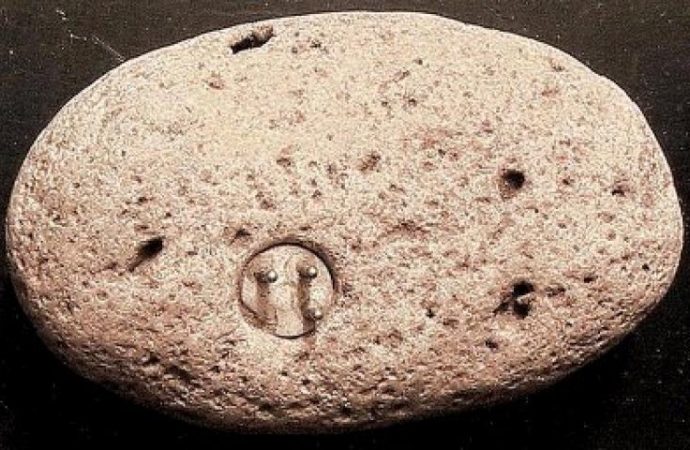A stone embedded with a three-pronged plug could be either evidence for a technologically advanced ancient civilization or a hoax.
In Beyond Science, Epoch Times explores research and accounts related to phenomena and theories that challenge our current knowledge. We delve into ideas that stimulate the imagination and open up new possibilities. Share your thoughts with us on these sometimes controversial topics in the comments section below.
An Oopart (Out Of Place ARTifact) is a term applied to dozens of prehistoric objects found in various places around the world that, given their level of technology, are completely at odds with their determined age based on physical, chemical, and/or geological evidence. Ooparts often are frustrating to conventional scientists and a delight to adventurous investigators and individuals interested in alternative scientific theories.
In 1998, electrical engineer John J. Williams discovered what looked like an electrical connector sticking up out of the ground. He began digging and found that that the three-pronged plug was embedded in a small rock.
According to Williams, the curious stone was unearthed during an excursion in a rural location in North America, far from human settlements, industrial complexes, airports, factories, and electronic or nuclear plants. While it may hurt the credibility of his discovery, Williams refuses to give the exact location of his find, for fear that the site might be plundered of other mysterious relics.
Known as the “Enigmalith” (a combination of the words enigma and monolith) or” Petradox,” the device presents the undeniable appearance of an electronic component embedded in a naturally formed, solid granite stone composed of quartz and feldspar (including very small percentages of mica.)
Due to the secrecy surrounding the find, its $500,000 price tag, and an extraterrestrial theory surrounding the object, many from the scientific community have categorized the Enigmalith as a hoax manufactured solely for the fame and fortune for its owner.
However, Williams explains that his unusual stone is available to any researcher for analysis. Scientists have so far shied away from testing the rock, despite the open invitation.
According to Williams, who has consulted an engineer and geologist to examine the specimen, the electronic component embedded in the granite reveals no trace of having been glued or welded in any form known; it is clear that the object already existed at the time of the formation of the rock.
After the stone was found, geological analysis found it to be about 100,000 years old—a technical impossibility according to conventional understanding of mankind’s technological development.
The instrument caught in the Petradox has been compared by some investigators to an electronic XLR connector or similar component. It presents a weak magnetic attraction, and ohm meter readings reveal that it has a strength approaching that of an open circuit.
The three-pronged plug is held by a matrix of a thus-far indeterminable origin. The 0.3-inch diameter piece does not appear to be manufactured out of wood, plastic, rubber, metal, or some other recognizable material.
While Williams forbids the specimen from being broken open, he has employed a powerful X-ray, revealing that the matrix component extends into an opaque internal structure within the stone.
While skeptics believe it to be a sham, Williams is convinced that he has unearthed a genuine relic of either ancient manmade or alien technology, and is eager to have scientists authenticate it. However, Williams insists that he be present during analysis, the rock remains unharmed, and that he does not have to pay for the research involved.
Some believe that scientists distance themselves from the specimen because they are afraid of what they might discover. While scientific analysis could confirm it as an elaborate hoax, it might also radically change our understanding of human history.
If the specimen is determined to be genuine, researchers would also have to consider its design. Why would such a component be embedded in a rock? What purpose would such an object serve?
Williams believes that the location of his stone offers further evidence of a bygone civilization or extraterrestrial evidence. He is currently seeking a team of open-minded investigators to thoroughly examine the site.
Source: Epoch Times

































Leave a Comment
You must be logged in to post a comment.